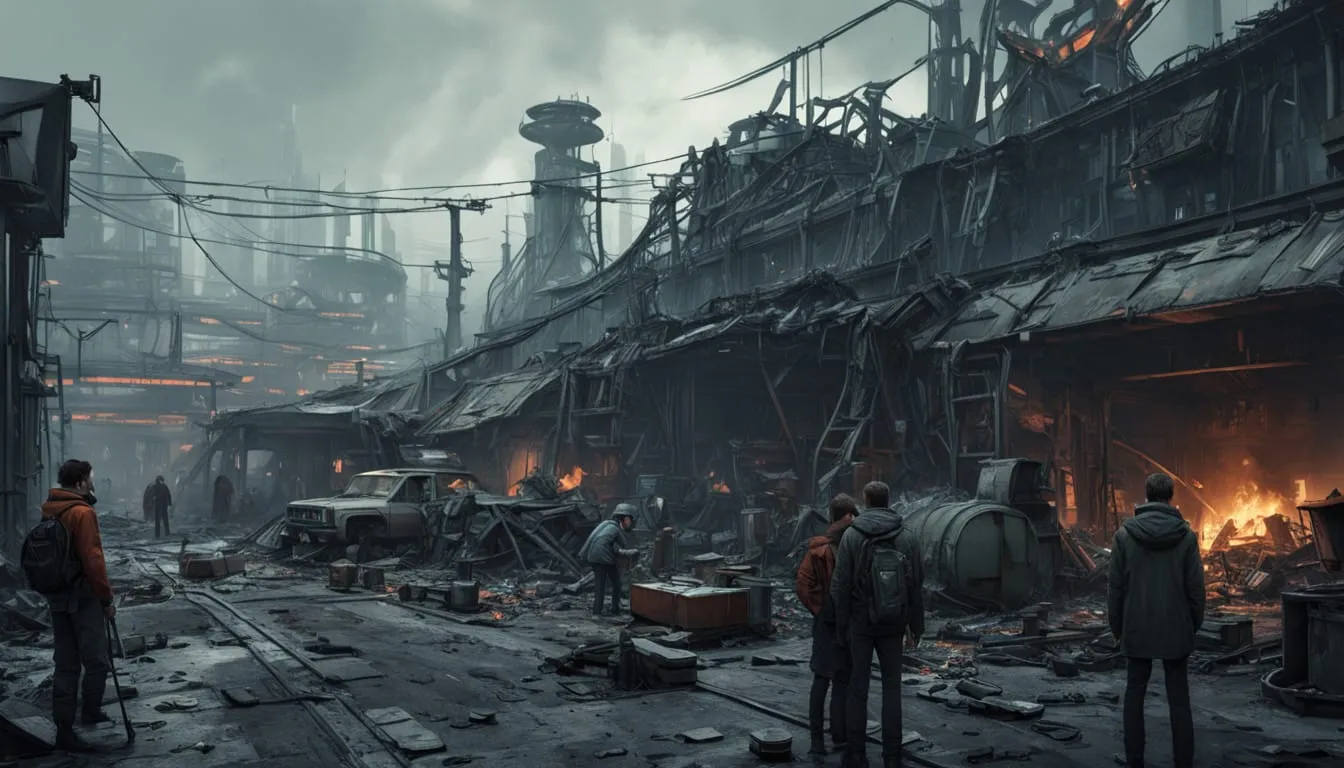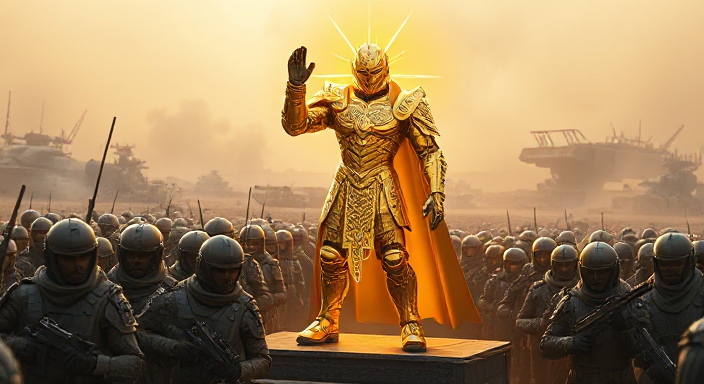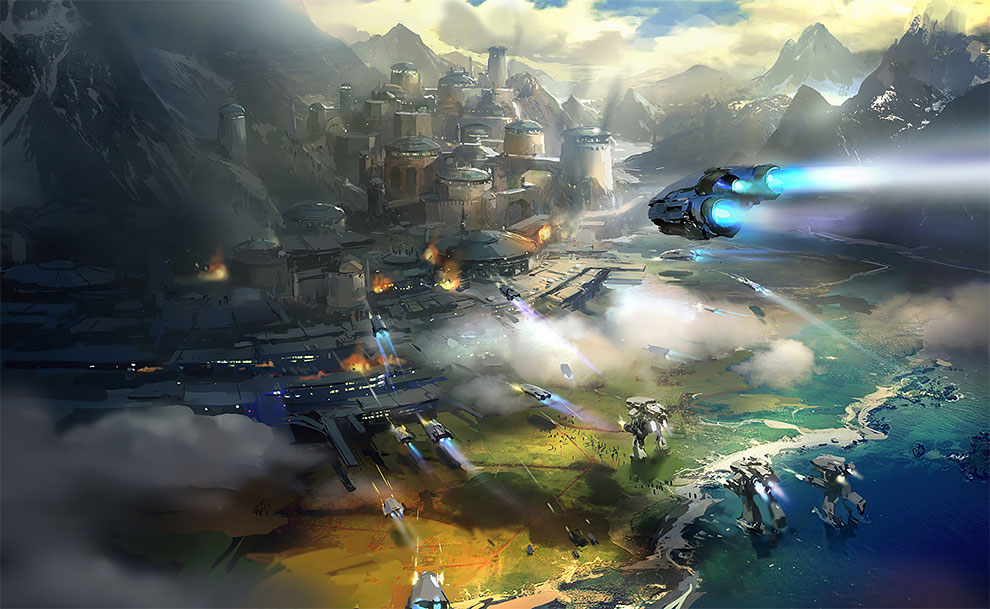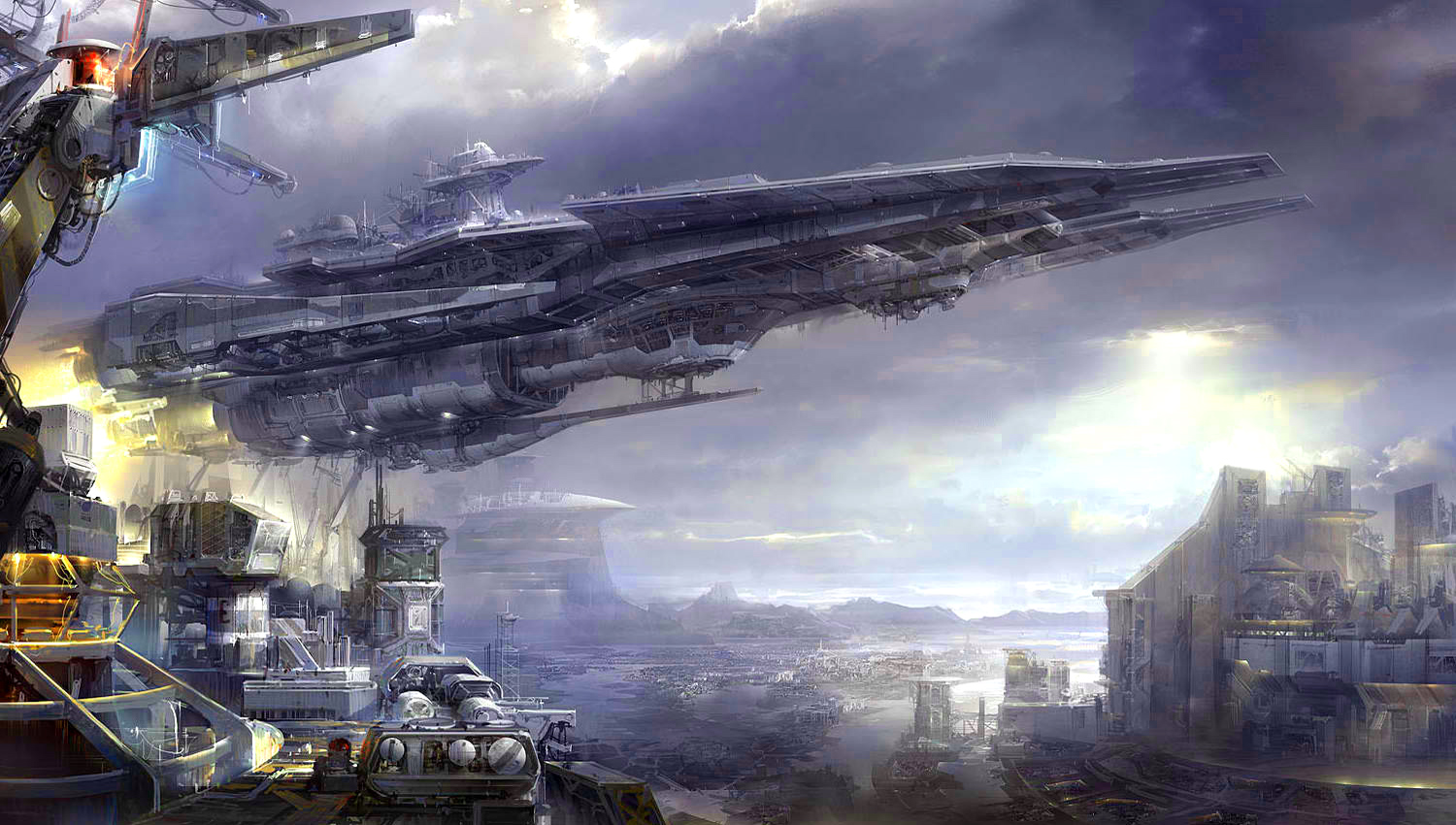History of the Heimveld
The History of the Heimveld
The Heimveld as we know it is 16,977 years old, counted from the date that the Unfallen completed his conquests, left control of humanity to the three Directorates, and Ascended. Since that time, when the new empire numbered only 17 systems, great progress has been made in reuniting the galaxy under the banner of the last true empire of Humanity. The following is history as recorded by the Archive of the Heimveld.
The Dark Age

In the long centuries following the collapse of humanity’s first golden age, the stars grew cold and distant once more. Separate human worlds languished in stagnation, their technological achievements eroded to myths and half-remembered relics of a brighter past. Most faster-than-light travel was lost, leaving many planets isolated and struggling for survival. Alien empires flourished in the void left behind, subjugating scattered human populations or exploiting their fractured state. The dream of a united humanity was little more than a faint memory, with only a handful of multi-system powers clawing for influence among the ruins. It was a time of desperation, disunity, and despair in which the lives of most of humanity were poor, nasty, brutish, and short.
Key Features of the Dark Age:
Technological Decline and Isolation - The majority of humanity’s advanced technologies, including reliable faster-than-light travel, were lost or rendered inoperable. Communication between worlds ceased, and most planets became insular, focusing solely on survival. Knowledge of medicine, engineering, and energy generation reverted to rudimentary levels on many worlds. Alien Domination - With humanity fractured, alien empires and opportunistic species took control of countless human-inhabited planets. Some worlds were annexed outright, while others served as client states, supplying resources or slaves to their alien overlords. Resistance was sparse and often futile. Fragmented Human Powers - A few multi-system “empires” persisted, relying on rediscovered or salvaged FTL drives. These powers were brutal and despotic, hoarding scarce technology to maintain dominance over neighboring systems.
2. The Grundzeit (Foundation) Era (Years -1,250 (approx) -0)

This was a time when humanity emerged from the dark age and gathered power in the core worlds under the leadership of the Unfallen. A coalition of world-states united under the belief that they occupied humanity’s original home system of Falraven and called themselves the Strava Republic, from the name of the “original” world of origin. This system, rich with resources and ancient artifacts, became the cradle of the nascent Heimveld. The Republic took total control of first their own system and then burst out into local space on a blitzkreig war of expansion. This ran through until their final battle at the close of the war against the XXX when the Unfallen Ascended and the three Directorates formed the Heimveld to fill the space he left.
Key elements of this period:
- Growth of the Directorates: The Archive, War Council, and Temple were elements of the old Republic, and managed it’s core functions. Their balance of power shifted and changed through internal struggles and shifting politics, while their competition for influence bred a ruthless efficiency.
- The Rise of the Unfallen: A charismatic and powerful figure, the Unfallen, led humanity’s reconsolidation and became the sole leader of Humanity for nearly 500 years. The Unfallen’s supposed disappearance into the stars (The Ascendance) birthed myths that he would return in humanity’s hour of need.
- Early Struggles: Internal dissent and remnants of non-human civilizations led to bloody wars of consolidation. The foundations of the empire were built upon loyalty to the Unfallen and absolute control of human destiny.
3. The Lebensmark (Expansion) Era (Years 0–9,830)

The Lebensmark (Living Space) Era marked a period of aggressive yet methodical growth for the Heimveld. It began with the consolidation of human-controlled territories, after which the Heimveld directed its military might toward neighboring sectors, eager to fulfill its doctrine of manifest destiny. The belief that humanity’s rightful place was as rulers of the stars fueled this expansion, with the Heimveld painting itself as the legitimate inheritor of a grand cosmic legacy. Armed with superior technology and an unyielding ideology, they subdued countless civilizations, enforcing their rule through fear, diplomacy, and overwhelming force. The Expansion Era eventually set the stage for the Heimveld’s dominance over the entire spiral arm of the galaxy, creating a vast empire steeped in both fear and fervent religious zeal.
- Technological Renaissance: Reverse-engineering ancient artifacts allowed for rapid advancements in shipbuilding, weaponry, and terraforming.
- Manifest Destiny: The Temple declared that humans were divinely chosen to rule the stars, justifying their annexation of independent human colonies and alien worlds alike.
- Cultural Assimilation: Local dialects, traditions, and governance systems were eradicated or absorbed into the Heimveld’s rigid structure. The official language, Eintung, became universal.
- First Alien Wars: Encounters with powerful alien civilizations led to brutal conflicts. Some species were exterminated; others were enslaved or forced into exile.
By the end of this era, the Heimveld controlled vast stretches of the spiral arm, with only the most distant and isolated sectors remaining untouched.
4. The Einzeit (One time - Purification) Era (Years 9,830–13,407)

The Einzeit Era was a dark and turbulent period in the Heimveld’s history, born from internal strife, disillusionment, and the stagnation of an empire that had once been unstoppable. As the grand vision of human supremacy began to show cracks, dissent spread among the populace, the military, and even the ruling elite, leading to rebellions and localised civil wars. In response, the leadership initiated a brutal series of purges and reforms, determined to cleanse the empire of heresy, weakness, and dissent. The Archive expanded its influence, ruthlessly rooting out traitors and subversive elements, while the War Council grew more authoritarian, tightening its grip on power through fear and violence. The Temple of the Unfallen declared a divine mandate to restore order, rallying the faithful with promises of purification and salvation. The result was a period marked by fear, oppression, and a return to the most rigid interpretations of Heimveld doctrine. The Purification Era would ultimately reshape the Heimveld, leaving it scarred but more resolute in its belief in its divine destiny.
- The Heretic Wars: Several factions, including splinter groups within the Temple and Registry, challenged the Heimveld’s authority. These uprisings were met with overwhelming force, culminating in the extermination of billions.
- The Great Purge: The Archive’s secret police spearheaded the eradication of dissenting elements. The Temple declared a crusade against heresy, rooting out ideological impurity and cementing the Templars as a key part of society.
- Cultural Homogenization: Any lingering regional or rival ideologies were obliterated. Loyalty to the Heimveld and the Unfallen became absolute, enforced by propaganda and public ritual. Many of the modern society-wide practices and cultrual norms were crafted and emplaced at this time.
By the era’s end, the empire was purified of internal division, though at great cost. The scars of this period shaped the Heimveld’s obsessive focus on control and unity.
5. The Styrkemarch (Star Path) (Years 13,407–16,977)

The Star Path marks the current epoch in the Heimveld’s history, an era defined by an ambitious and relentless drive to seek out and enfold the distant, forgotten, and ancient human settlements scattered across the galaxy. These worlds, once thriving centers of human civilization during the early days of humanity’s expansion, have since fallen into isolation, stagnation, or alien domination. For millennia, the Heimveld has viewed these lost colonies as part of its sacred birthright, and the Star Path represents a renewed, crusade-like mission to bring them into the empires dominion. The Heimveld’s forces, both military and diplomatic, have set their sights on these far-flung regions, with fleets of warships, grim faced book-keepers, and zealous missionaries ready to claim each world for humanity. This era, driven by an uncompromising belief in their destiny, will shape the future of the Heimveld as it seeks to reunite humanity and secure its dominance over the stars once and for all.
- Rediscovery of the Old Frontiers: Exploration fleets venture into forgotten sectors, encountering ancient ruins, rogue colonies, and alien remnants. The Heimveld seeks to bring these regions under its dominion.
- Religious Zeal: The Temple proclaims the Styrkemarch, the divine mission to fulfill humanity’s destiny among the stars. Every conquest is framed as a sacred act.
- Technological Unease: Fragments of advanced AI and alien tech have been uncovered, raising fears of heretical influence. The Registry monitors these discoveries closely, while the War Council seeks to weaponize them.
- Rising Tensions: Alien powers and independent human factions resist the Heimveld’s advances. The fringes of the empire are battlegrounds, with new conflicts brewing.
- The Myth of the Unfallen: Whispers of the Unfallen’s return grow louder, fueled by propaganda and unexplained phenomena at the empire’s borders. Some believe their reappearance will herald the ultimate victory; others fear it will expose the empire’s flaws.
The Star Path embodies the Heimveld’s unyielding ambition. To its citizens, it is the dawn of a glorious new chapter; to its enemies, it is the shadow of an unstoppable juggernaut.